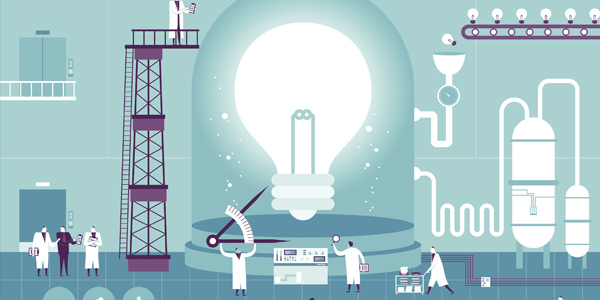
What if we actually woke up now to the challenges of climate change and began to take action? What would our planet be like in 2040? That is exactly the question that filmmaker Damon Gameau answers his new documentary envisioning a positive future of 2040. Gameau’s one caveat was that he only highlighted currently available technologies.
This documentary really opened my eyes to the climate solutions that are available now. This Herman Trend Alert features a few of the big ideas from that documentary, including creating an economy that works for everyone. Using climate experts Kate Raeworth, Genevieve Bell, Eric Toenshmeier, Paul Hawken, Cole Sykes, Helena Norberg-Hodge and Brian Von Herzen, the film director creates a credible and digestible message that makes a lot of sense.
Bangladesh is Leading the Way
In many villages, every home is equipped with solar panels soaking up the sun’s energy and selling any electricity that is not used by the house back to the power grid. Their micro-grids provide a system of distributed energy production. With this network of microgrids, every family that owns a solar panel has a potential additional income stream. Sadly, this system is outlawed in many countries.
Car Ownership 2040
By the year 2040, the planet is forecasted to have more than 1 billion additional cars. However, this vision does not take into account the advent of autonomous vehicles with shared ownership and/or on-demand transport. In the future, private car ownership is likely to be four times more expensive than shared ownership. Right now, two-thirds of the City of Los Angeles is parking spaces and roads. If our future holds community-owned vehicles, imagine that our empty parking lots could be transformed into urban food farms, while the tops of buildings could be turned into rooftop farms.
Cyber-Bots Spread Fake Climate Science That Seems Real
Fossil fuel producers fund, including Exxon, support partisan “Think Tanks” to spread misinformation about climate science. They make it seem like there is a larger percentage of climate deniers than people who believe in climate science. Then cyber-bots spread this misinformation and the fake science went viral. To me, this fact explains a lot; I have always wondered why seemingly intelligent people could possibly ignore the overwhelming evidence about what is really happening, i.e., that the climate is rapidly changing! Now, I understand.
To Sequester More Carbon than is Being Produced, Flip the System
By far, though, my favorite idea came from researcher Paul Hawken. In the film, he details the system for using plants to pull carbon from the atmosphere and put it back into the soil. The way this process was explained is so clear and understandable; it was a real eye-opener for me to finally get this process: Plants use energy from the sun together with carbon dioxide to create simple sugars. Some of these sugars are used by the plant to nurture its growth; the balance of these sugars is pushed into the soil through the roots. These sugars feed soil microbes, which interact with the plant and the carbon dioxide that was removed from the atmosphere stays in the soil as carbon. This system is called Regenerative Farming.
We Cannot Mitigate Climate Change Without Engaging Farmers
One-third of the world’s crop land is used to produce food for animals. If farmers return to free-range animals who can eat the grass, we can be even more efficient.
Seaweed is Another Solution
Finally, we want to focus on how Marine Permaculture can help the oceans regenerate themselves. As the oceans warm, they become more acidic. That temperature increase is reducing sea life, including seaweed. Many fish species are in danger of collapse. If we can bring up cooler temperatures from the ocean depths, we can restore life in tropical oceans, including fish habitats to ultimately, fisheries.
How Marine Permaculture Works
The system restores overturning circulation to bring the cooler waters closer to the surface; the higher nutrient levels can even restore conditions for seaweed. Between Australia and the United States, there are 100 Million Square Kilometers of ocean desert with minimal support for marine permaculture. Imagine a frame made of recycled materials becomes a platform for the seaweed to grow on. That platform stays just below the surface of the water; as the seaweed continues to grow and gets heavier, it sinks lower; a pump powered only by the differences in temperature, brings the cold water up from below and brings the cold nutrient rich water over the seaweed. Then the seaweed is regularly harvested. Seaweed is good for a myriad of uses—food, biofuel, animal feed, fertilizer, and fiber. One species of seaweed is the fastest growing plant on the planet.
What the Future Holds
I wish I could forecast that the planet will wake up and begin implementing these solutions right away. Unhappily, no matter how severe the storms and widespread the forest fires, it appears that the immediate profit motive seems to be winning out. I can only hope that earth’s humans become conscious before it is too late.
To be part of Gameau’s vision, register at whatsyour2040.com.
© Copyright 1998-2019 by The Herman Group, Inc. – reproduction for publication is encouraged, with the following attribution: From “The Herman Trend Alert,” by Joyce Gioia, Strategic Business Futurist.














